PicoScope 2000AB series of USB oscilloscopes 10 MHz to 100 MHz
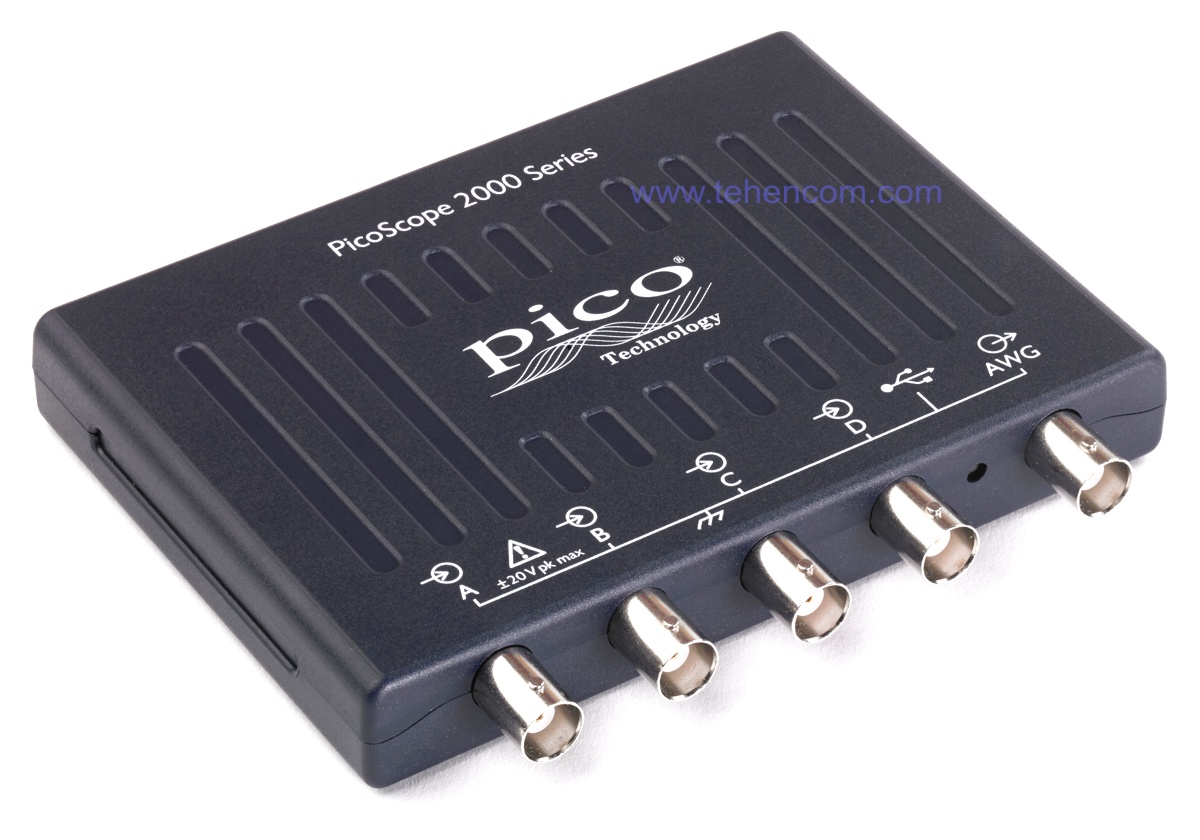
Brief description of the series
Of all the series of USB oscilloscopes that the company produces Pico Technology (United Kingdom) series PicoScope 2000A and PicoScope 2000B are inexpensive entry-level oscilloscopes. However, in terms of the combination of their characteristics, these miniature devices are significantly superior to most of their competitors in the economy segment.
The PicoScope 2000A series consists of four entry-level models with 10 MHz and 25 MHz bandwidths. And the PicoScope 2000B series consists of nine models that differ in bandwidth (50 MHz, 70 MHz or 100 MHz), the number of analog channels (2 or 4) and the presence of a built-in logic analyzer for 16 digital channels (present in models with the MSO suffix). You can download a full description of all the characteristics of these oscilloscopes below on this page in the section Documentation.
All models of the series
The Pico Technology PicoScope 2000AB series consists of thirteen models, which are presented in this interactive table. To see all the characteristics of certain models, add them to the comparison.
| Model |
Bandwidth
|
Analog channels
|
Digital channels
|
Sample rate
|
Record length
|
Waveforms per second
|
|---|---|---|---|---|---|---|
|
2204A
|
10 MHz | 2 | — | 100 MS/s | 8 K points | 2 000 |
|
2205A
|
25 MHz | 2 | — | 200 MS/s | 16 K points | 2 000 |
|
2405A
|
25 MHz | 4 | — | 500 MS/s | 48 K points | 2 000 |
|
2205A MSO
|
25 MHz | 2 | 16 | 500 MS/s | 48 K points | 2 000 |
|
2206B
|
50 MHz | 2 | — | 500 MS/s | 32 M points | 80 000 |
|
2406B
|
50 MHz | 4 | — | 1 GS/s | 32 M points | 80 000 |
|
Top sales
2206B MSO
|
50 MHz | 2 | 16 | 1 GS/s | 32 M points | 80 000 |
|
2207B
|
70 MHz | 2 | — | 1 GS/s | 64 M points | 80 000 |
|
2407B
|
70 MHz | 4 | — | 1 GS/s | 64 M points | 80 000 |
|
2207B MSO
|
70 MHz | 2 | 16 | 1 GS/s | 64 M points | 80 000 |
|
2208B
|
100 MHz | 2 | — | 1 GS/s | 128 M points | 80 000 |
|
2408B
|
100 MHz | 4 | — | 1 GS/s | 128 M points | 80 000 |
|
Top sales
2208B MSO
|
100 MHz | 2 | 16 | 1 GS/s | 128 M points | 80 000 |
Main features of the series
10 MHz, 100 MS/s, 2 channels (model PicoScope 2204A).
25 MHz, 200 MS/s, 2 channels (model PicoScope 2205A).
25 MHz, 500 MSa/s, 4 channels (model PicoScope 2405A).
50 MHz, 500 MSa/s, 2 channels (model PicoScope 2206B).
50 MHz, 1 GS/s, 4 channels (model PicoScope 2406B).
70 MHz, 1 GS/s, 2 channels (model PicoScope 2207B).
70 MHz, 1 GS/s, 4 channels (model PicoScope 2407B).
100 MHz, 1 GS/s, 2 channels (model PicoScope 2208B).
100 MHz, 1 GS/s, 4 channels (model PicoScope 2408B).
25 MHz, 500 MSa/s, 2 channels + 16 digital channels (model PicoScope 2205A MSO model).
50 MHz, 1 GS/s, 2 channels + 16 digital channels (model PicoScope 2206B MSO model).
70 MHz, 1 GS/s, 2 channels + 16 digital channels (model PicoScope 2207B MSO).
100 MHz, 1 GS/s, 2 channels + 16 digital channels (model PicoScope 2208B MSO model).
If two or more channels are active, then the sampling rate is reduced (see table).
Recording length (total, depends on the model): from 8k points to 128m points.
Vertical resolution: 8 bits (up to 12 bits). Sensitivity: 4 mV/div to 4 V/div.
Continuous waveform capture rate (DPO mode): before 80,000 waveforms/s.
All models include a built-in standard and arbitrary waveform generator (AWG).
All models support decoding and analysis of 20 digital protocols: I2C, I2S, SPI, CAN, LIN, 1-Wire, RS-232/UART, USB, Ethernet and others.
18 automatic measurements, FFT analysis (FFT), mathematical signal processing.
Powerful PicoScope 6 software (in Russian) included in the scope of delivery.
Control via USB 2.0 from a computer with Windows XP, 7, 8, 10 or 11 (32 and 64 bits).
Weight: 0.2 kg. Dimensions: 130 x 104 x 19 mm. Working temperature: from 0°С to +50°С.
Pico Technology from the United Kingdom offers two series of low-cost, compact digital oscilloscopes PicoScope 2000A and PicoScope 2000B. Despite the relatively low price, they have excellent technical characteristics. The user of the PicoScope 2000A series is given the ability to measure electrical signals with high accuracy and excellent visualization in the frequency range up to 25 MHz. Models in this series can process signals from a wide range of analog and digital electronic devices. They are indispensable when working on the road, in research and in amateur practice.
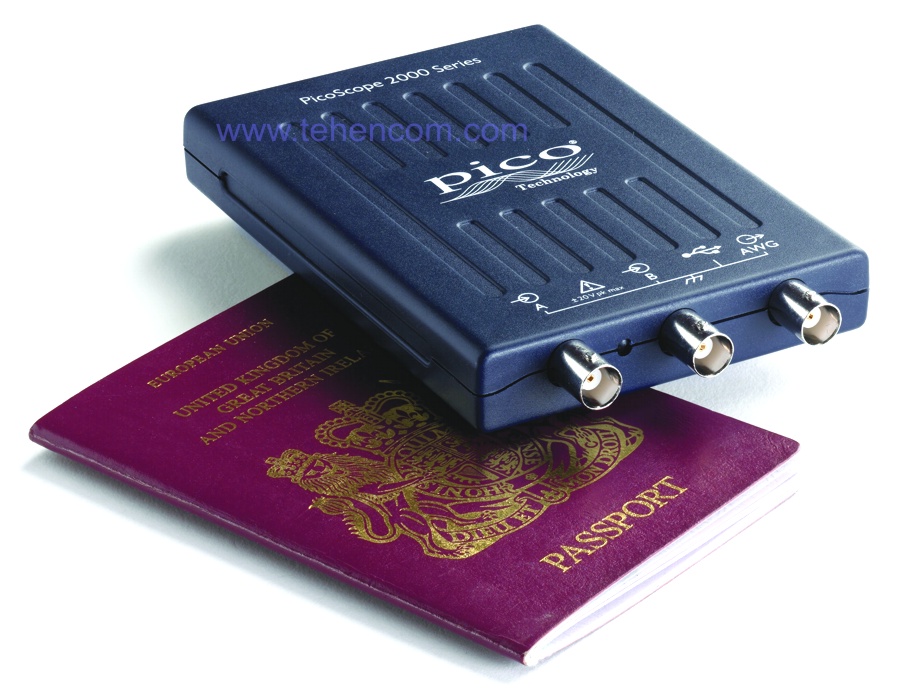
Models of the PicoScope 2000B series are distinguished by improved characteristics: a large amount of built-in memory (up to 128 MSa), increased bandwidth (up to 100 MHz) and a high update rate of waveforms. All this provides the ability to perform accurate and in-depth waveform analysis, evaluate sequential decoding and plot frequency versus time.
Need USB oscilloscope with bandwidth up to 200 MHz? Watch the series PicoScope 3000D.
Need USB oscilloscope with bandwidth up to 500 MHz? Watch the series PicoScope 6000E.
Need to measure conventional signals and radio signals? Watch the series Tektronix MDO3.
Difficult to decide on a model? See the guide: How to quickly choose an oscilloscope.
All series of modern oscilloscopes are presented here: Digital oscilloscopes.
Wide range of features
The purchase terms for PicoScope oscilloscopes are different from those purchased from other oscilloscope companies, where increased functionality means a significant increase in the price of the product. PicoScope is a versatile instrument that does not require additional costly hardware upgrades to improve its performance.
Functions such as resolution upscaling, mask matching, serial decoding, trigger selection, automatic measurements, math (including the ability to graph frequency and duty cycle versus time), XY mode, and memory segmentation are all already implemented in the device and included in the price.
Detailed display of signals
The studied signals are displayed on the computer screen using the PicoScope 6 software, which is included in the standard package. The PicoScope 6 software takes full advantage of the large screen display for improved signal detail and ease of use. The computing power of the PC provides the ability to display channel information in four windows at once. You can simultaneously observe the waveform, spectrum, and other parameters at different scales at the choice of the operator.
Unlike a conventional desktop oscilloscope, the PicoScope 2000A and 2000B series USB oscilloscopes are only limited by the size of the computer monitor. The software is also designed to work on touch screen devices. By touching the display surface with your finger, you can zoom in, move, scroll, highlight, and perform other operations.
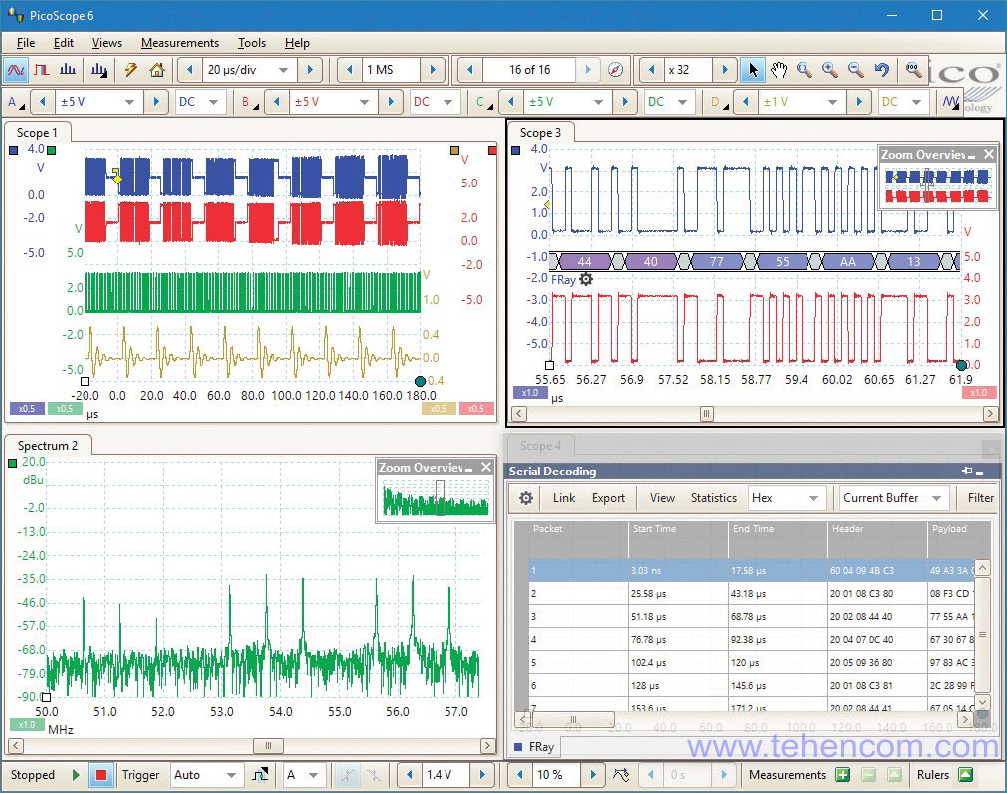
Powerful and very compact
All PicoScope 2000 models are very compact. They fit easily into a laptop briefcase, along with accessories and cables. The modern PicoScope 2000 is a worthy alternative to bulky desktop devices, ideal for a wide range of applications including engineering, research, training, service, monitoring, troubleshooting and repair, and is also indispensable for engineers who often work on site.
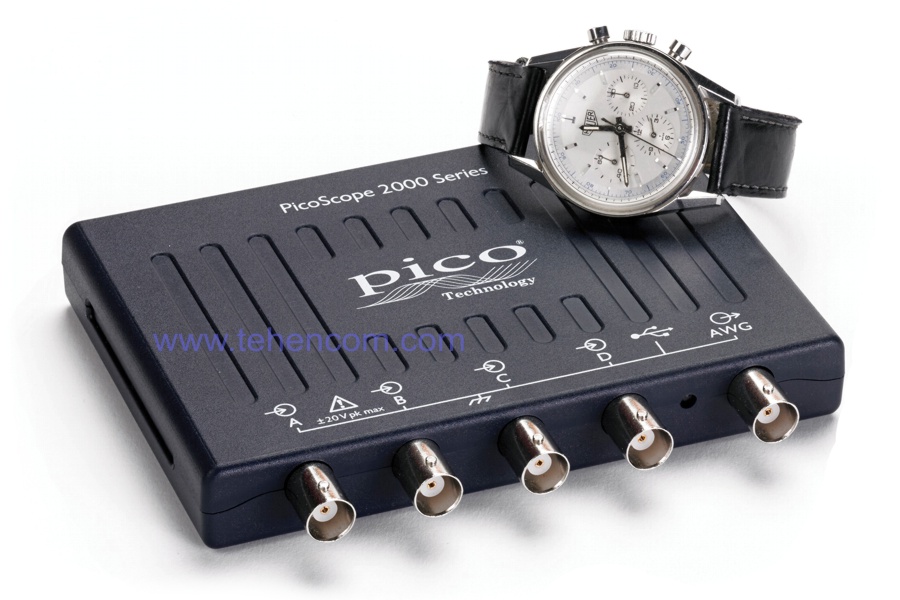
High display accuracy
The Pico Technology team takes pride in the high dynamic performance of their products. Thoughtful design and proper shielding reduce noise, crosstalk and harmonic distortion. A decade of intense design experience has resulted in an oscilloscope with flat bandwidth and improved impulse response. This ensures that the instrument readings can be trusted, that is, the waveform on the display corresponds to the true one.
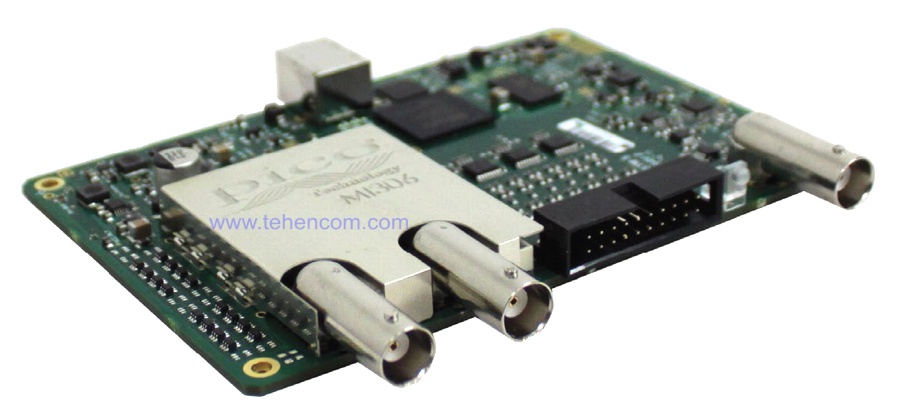
Deep capture memory
The PicoScope 2000 "B" series models have memory capable of storing 32 to 128 million samples - significantly more than similar competing instruments. Built-in memory allows capturing and further analyzing long duration signals digitized with maximum resolution. In practice, some models of the PicoScope 2000 series can acquire 100ms waveforms with 1ns resolution. For comparison, a signal of the same shape and duration (100 ms), processed by an oscilloscope with a memory of 10 Msample, already has an order of magnitude lower resolution, that is, 10 ns.
Deep memory allows you to implement a number of important functions. One of which is the software division of the capture memory into separate parts - segments, up to a maximum of 10,000 pieces. In this case, it is possible to set the trigger condition. When a trigger event occurs, capture is performed and then digitized. The received information is recorded in a separate segment, while the minimum time between triggers is only 1 µs. After recording data, you can step through each memory segment until the desired event is found.
Built-in powerful tools allow the user to manage and explore data. In addition to features such as signal masking and highlighting more frequent events, the PicoScope 6 software allows you to zoom in on the waveform by several million times. The Zoom Browser gives you easy control over the size and position of the zoom area.
Other tools such as waveform memory, hardware acceleration, serial decoding, deep memory make the PicoScope 2000 series oscilloscopes among the best on the market.
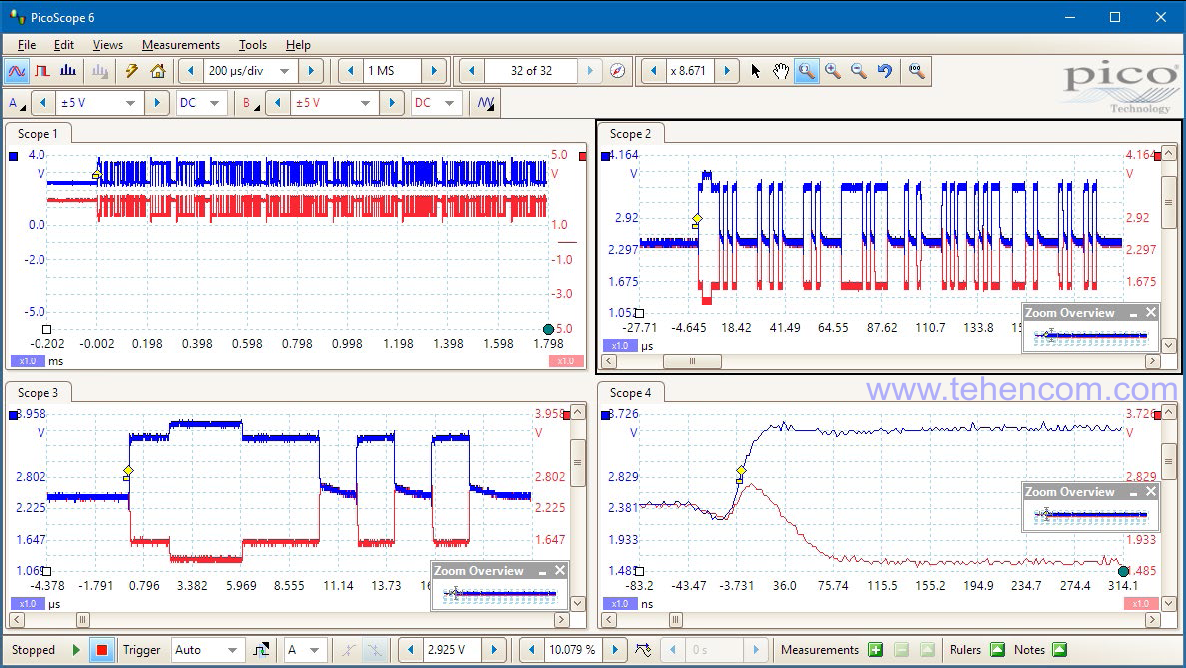
High sampling rate
The PicoScope 2000 instruments digitize an analog channel signal in real time with sampling rates up to 1 Gb/s and 1 ns time resolution. For repetitive analog signals, an Equivalent Time Sampling (ETS) mode is available that increases the maximum effective sample rate to 10 GS/s, thereby reducing the time resolution to 100 ps. With these capabilities, you can more accurately analyze the waveform, especially in the high frequency region. All oscilloscopes in the series support pre-trigger and post-trigger acquisition using the entire memory depth.
Software PicoScope 6
The PicoScope 6 software allows you to display both basic and detailed information on the display (PC monitor). Start by displaying one channel, and then expand the display to add other connected channels (up to four depending on the model), as well as math channels and reference signals. Display of multiple waveforms and spectra with automatic or custom setting, quick access from the toolbars to all the most commonly used controls, allow the user to select the optimal mode for analyzing and evaluating the signal under test.
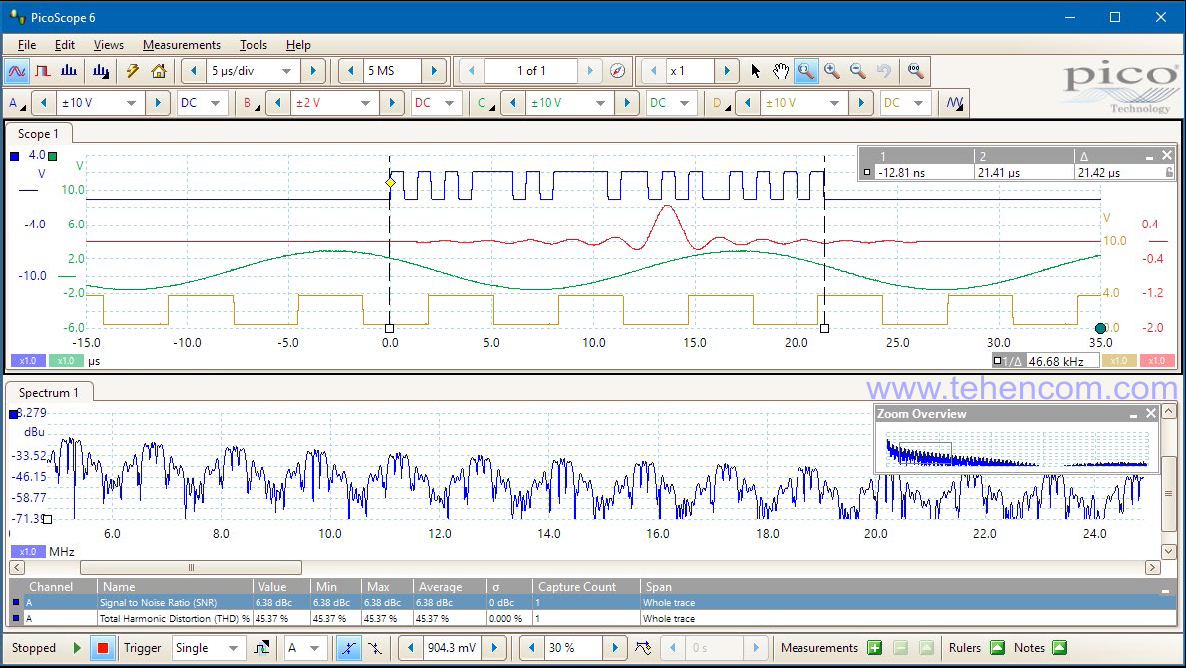
Mixed digital and analog signals
For PicoScope 2000 models MSO it is possible to add 16 digital channel displays to the two analog channels, allowing accurate synchronization of analog and digital signals. The user can group digital channels and display them as a bus, with each bus value displayed in hex, binary, or decimal, and as a level (for DAC testing). A flexible triggering system is provided for both analog and digital channels.
Digital inputs also provide additional options for decoding serial data transmitted on all analog and digital channels simultaneously (up to 18 data channels with SPI, I2C, CAN bus, LIN bus, FlexRay and others protocols).
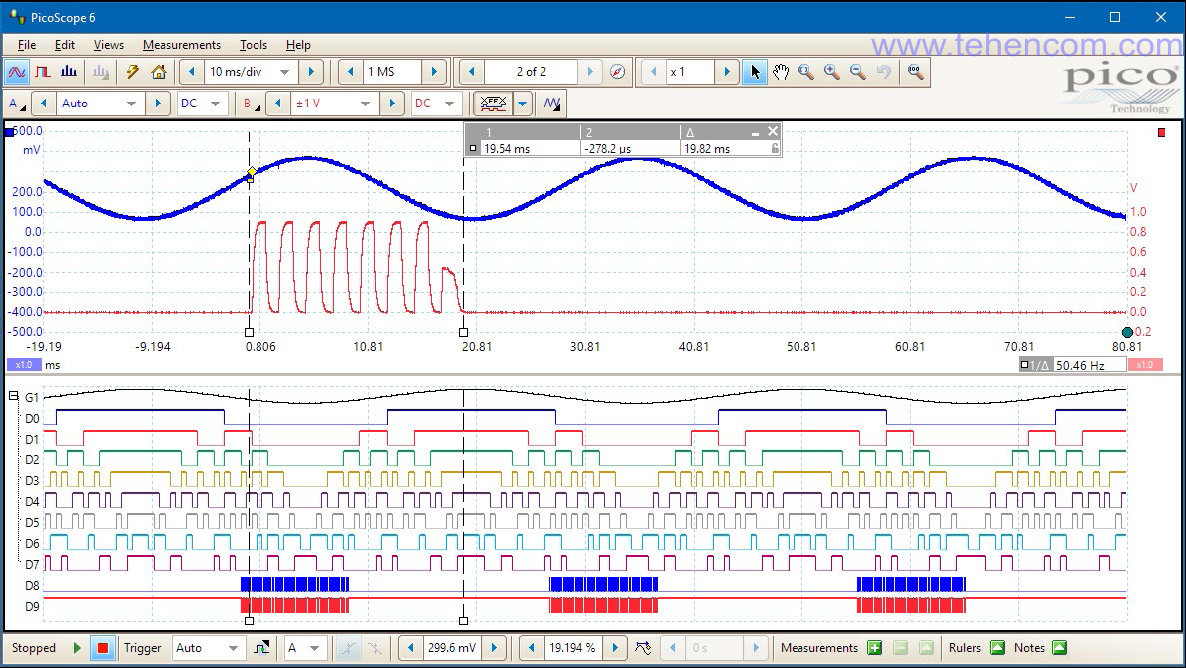
Persistence mode
PicoScope 6's persistence mode lets you see superimposed old and new measurements, with new waveforms indicated by a brighter color or a deeper hue. This makes it easy to detect infrequent glitches and estimate their relative frequency, which is useful for displaying and interpreting complex analog signals such as video and analog modulation waveforms.
The hardware acceleration of the PicoScope 2000 A and B means that waveform updates of up to 80,000 waveforms per second can be achieved in Fast Persistence mode. Color coding or intensity grading shows which areas are stable and which are intermittent. You can choose from different persistence modes: analog intensity, digital color, and fast display, or create your own custom setting.
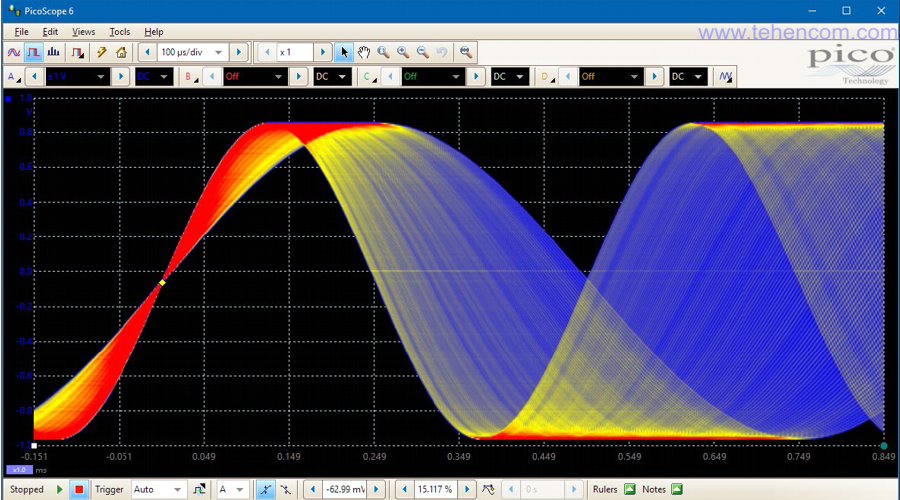
Spectrum analyzer
In spectrum analyzer mode, the oscilloscope displays amplitude versus frequency and is effectively used to find noise, all sorts of distortion in signals, or crosstalk. PicoScope 6 uses a Fast Fourier Transform (FFT) spectrum analyzer that (unlike a traditional scanning analyzer) displays the spectrum of a single, non-repeating waveform. FFT is a mathematical function in oscilloscopes that allows you to get the frequency components of the signal from the time dependence.
With the touch of a button, you can display the spectrum graph of active channels with a maximum frequency of up to 200 MHz. With a wide range of settings, you can control the number of spans of the spectrum, FFT window functions, scaling (including log/log), and display mode (instantaneous, average, or peak hold).
You can display multiple spectrum views with different channel settings and scaling factors and place them next to the corresponding time domain signals. A range of automatic frequency domain measurements can be added to the display, including SNR (Signal to Noise Ratio), THD (Total Harmonic Distortion), THD+N (Total Harmonic Distortion + Noise), SINAD (Signal to Noise Ratio and Distortion) and IMD (intermodulation distortion).
You can also apply a test for exceeding the limits of the reference mask to the spectrum. And to perform scalar analysis of electrical circuits, you can use spectrum mode and AWG (arbitrary waveform generator) together.
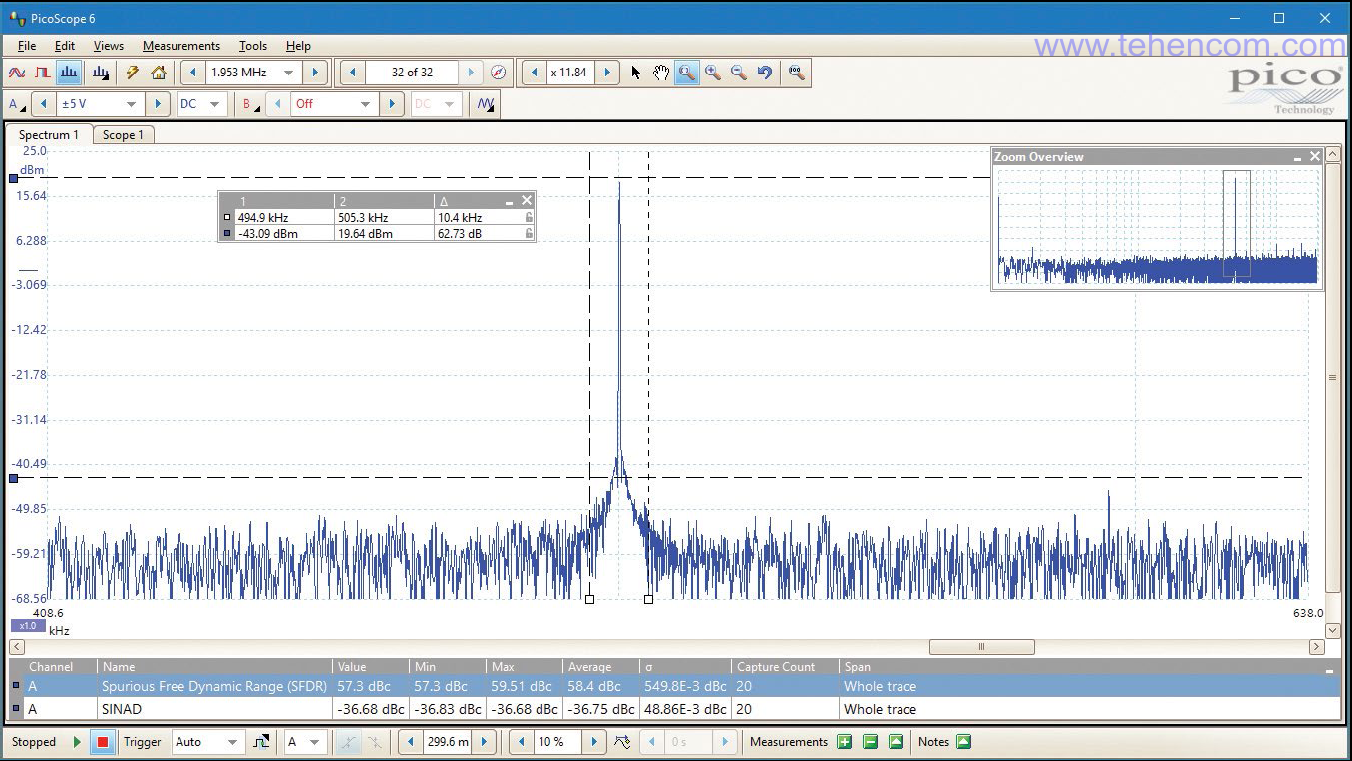
Decoding of serial protocols
PicoScope 2000 Series oscilloscopes include serial decoding capability as standard. PicoScope 6 software supports 20 protocols including I2C, SPI, CAN, RS-232, Manchester, DALI and more. Decoding helps you see what's going on in your prototype, pinpoint programming and timing errors, and check for other signal integrity issues. Time analysis tools help show the performance of each element of a prototype by identifying parts of the design that need to be improved to optimize overall system performance.
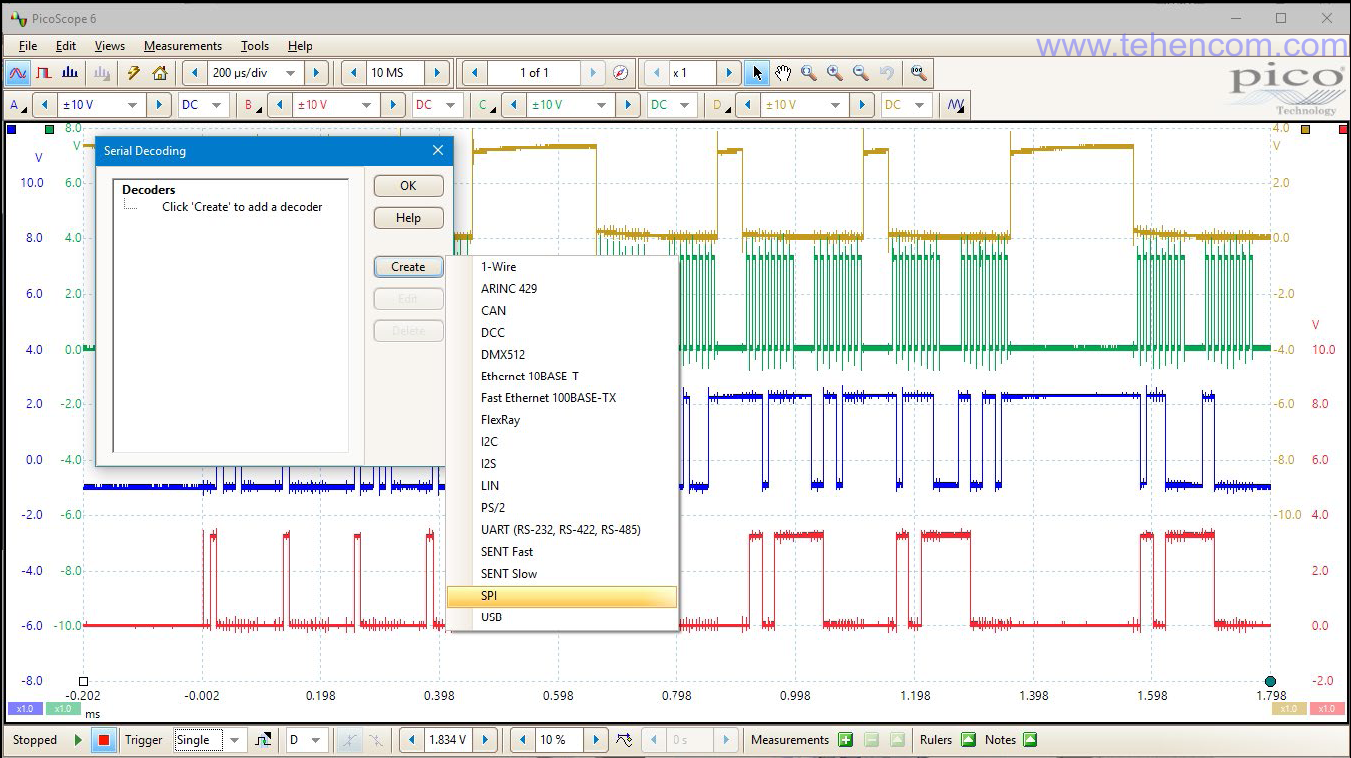
You can capture and decode multiple protocols at the same time in any combination, the only limitation is the number of available channels (there are only 18 for MSO models). For example, it is very effective to monitor data flow across a CAN bus or LIN bus bridge.
Compared to the PicoScope 2000A series, the large memory of the PicoScope 2000B models (up to 128M points) makes them ideal for sequential decoding, as they are capable of internally storing and processing thousands of data acquisitions.
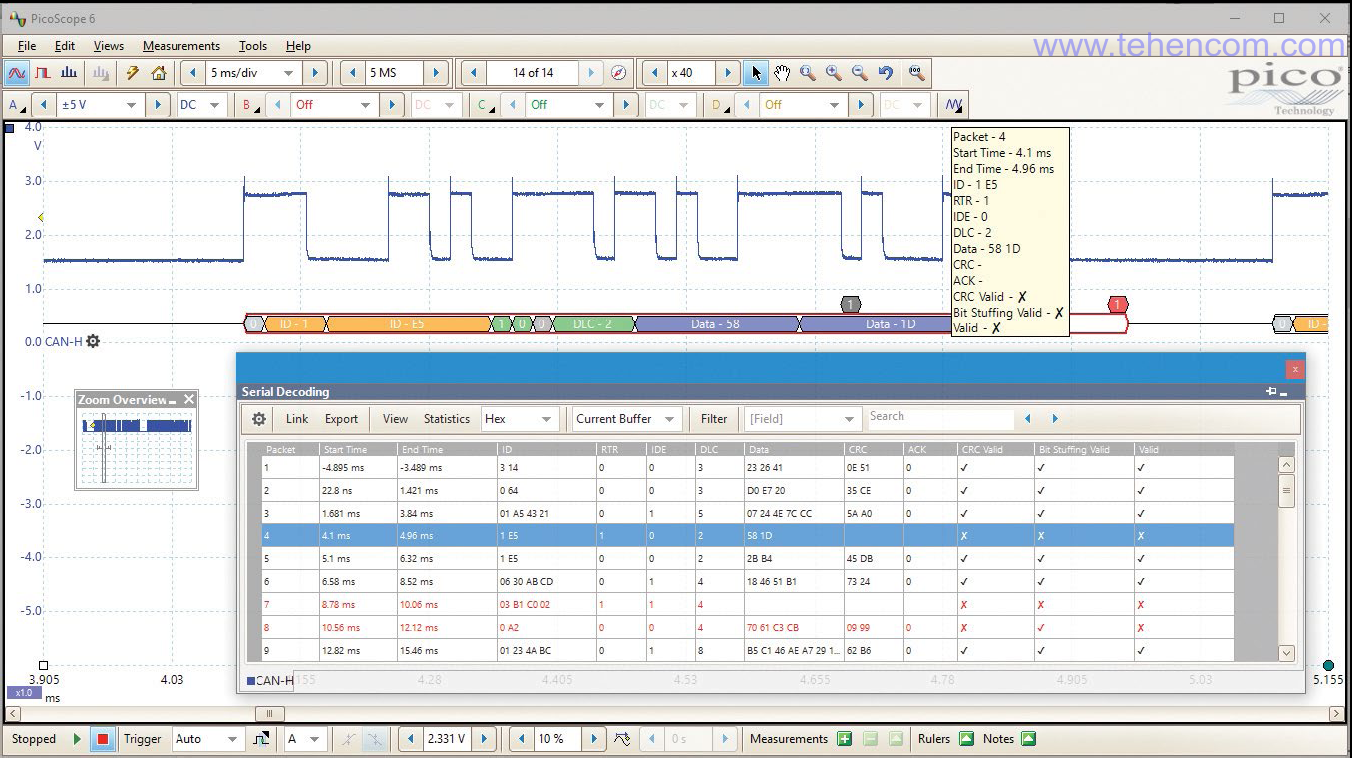
Mask test with limits
The mask test with limits allows you to compare current signals with reference signals and is intended for testing in production or debugging. Simply capture a reference waveform, generate a mask around it, and then use mask overshoot to automatically save any waveform (with a timestamp) that causes mask violations. PicoScope 6 is able to capture any intermittent failures and show the number of failures in the measurement window (which you can also use for other measurements). In addition, you can set the Signal Buffer Navigator to display only masked faults, allowing you to quickly locate any signal deviations.
Mask files are easy to edit (numerically or graphically), import and export, and run mask limit tests simultaneously on multiple channels and multiple viewports.
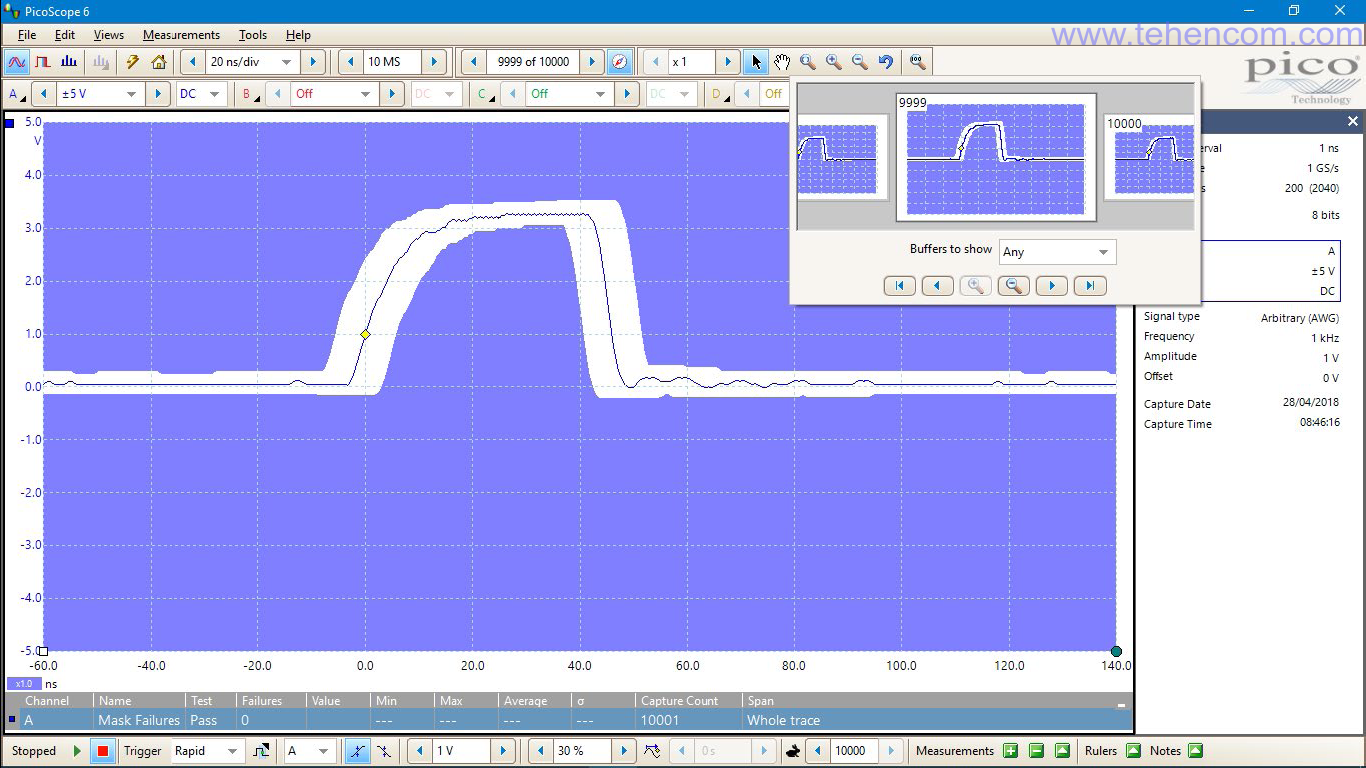
Arbitrary waveform generator
All PicoScope 2000 Series oscilloscopes include a built-in arbitrary waveform generator (AWG) and a function generator. With the function generator, you can generate square, triangular, and sine waveforms, as well as DC voltage waveforms and more, while for AWG, you import waveforms from data files or create them with AWG's built-in graphics editor.
As well as adjusting the signal level, setting the DC offset and fundamental frequency, you can also adjust the frequency ramp, which, in combination with the PicoScope 2000 Spectrum Analyzer mode, allows you to check the characteristics of amplifiers and frequency filters. The spectrum analyzer mode supports such features as: peak hold (peak hold), average value (averaging) and linear / logarithmic modes (linear / log).
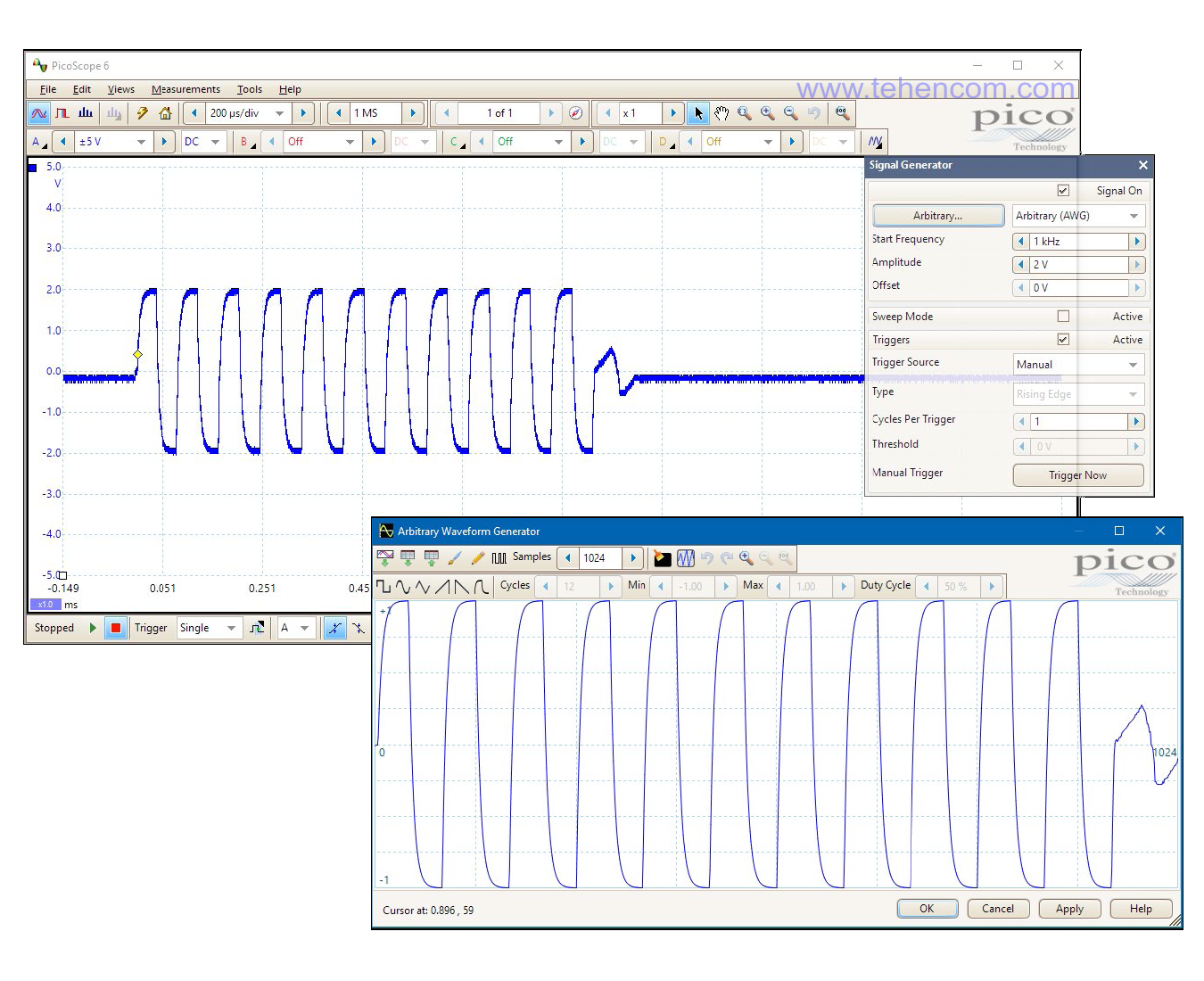
Automatic measurements
PicoScope allows you to automatically display a table of calculated measurements for troubleshooting and signal analysis. Using the built-in statistics, you can determine the current value, mean, standard deviation, maximum and minimum of each measurement, and many other parameters.
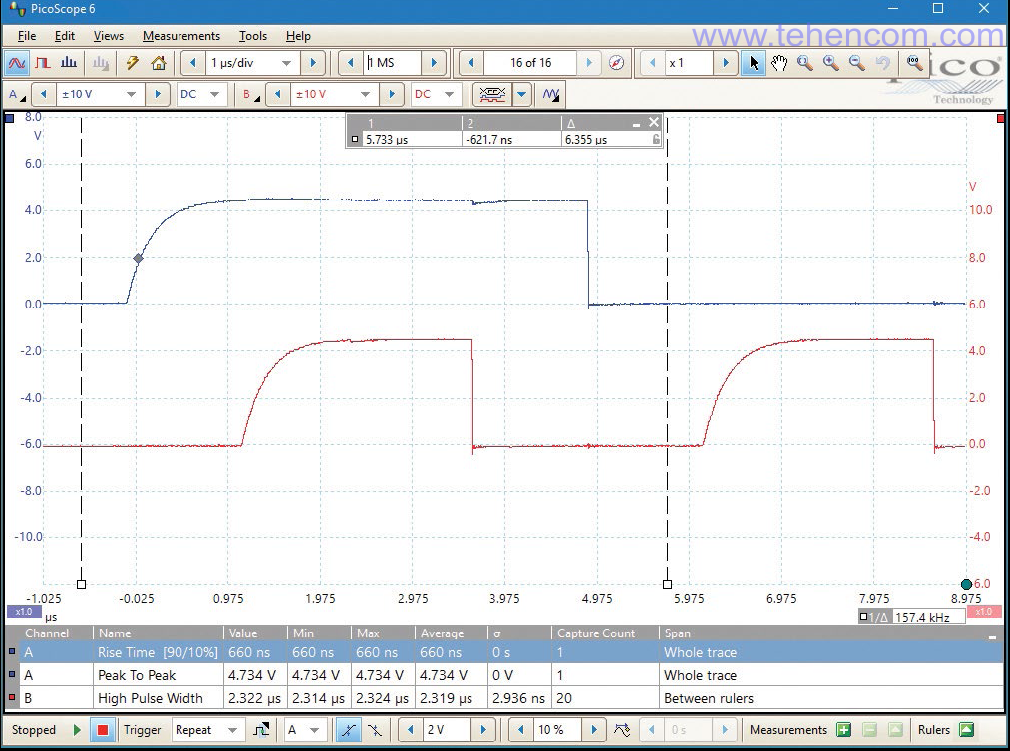
You can add as many measurements as you need for each view – 18 different measurements are available in oscilloscope mode and 11 in spectrum mode. For information about these measurements, see the "Automatic Measurements" section in documentation of PicoScope 2000A and B series.
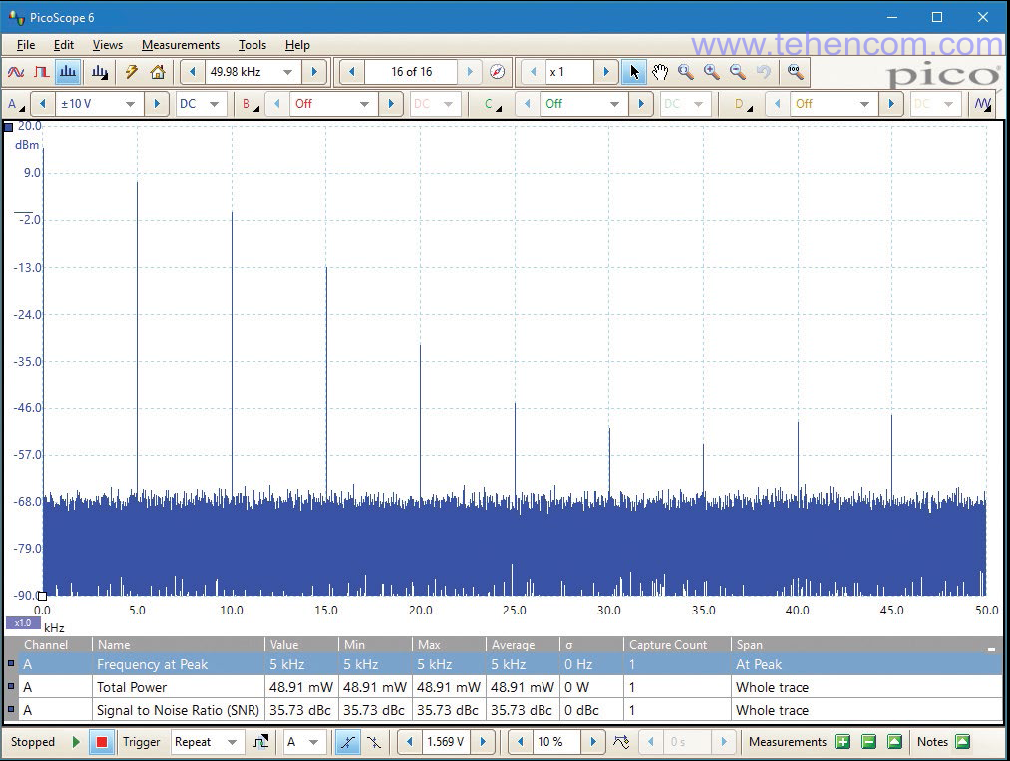
Advanced digital triggering
In 1991, Pico Technology was the first to apply a digital trigger system with precise hysteresis to real digitized data. Traditionally, digital oscilloscopes use a comparator-based analog trigger architecture, which can introduce time and amplitude errors that cannot always be calibrated. In addition, the use of comparators can often limit trigger sensitivity at high bandwidth and create a long trigger re-enable delay.
Pico's all-digital triggering technology reduces trigger errors and allows oscilloscopes to trigger on the smallest signals even at full bandwidth, so you can set trigger levels and hysteresis with high resolution and precision. Also, the digital trigger architecture reduces the reclosing delay. Combined with segmented memory, it allows fast triggering to capture up to 10,000 signals in 8-bit mode in as little as 10ms.
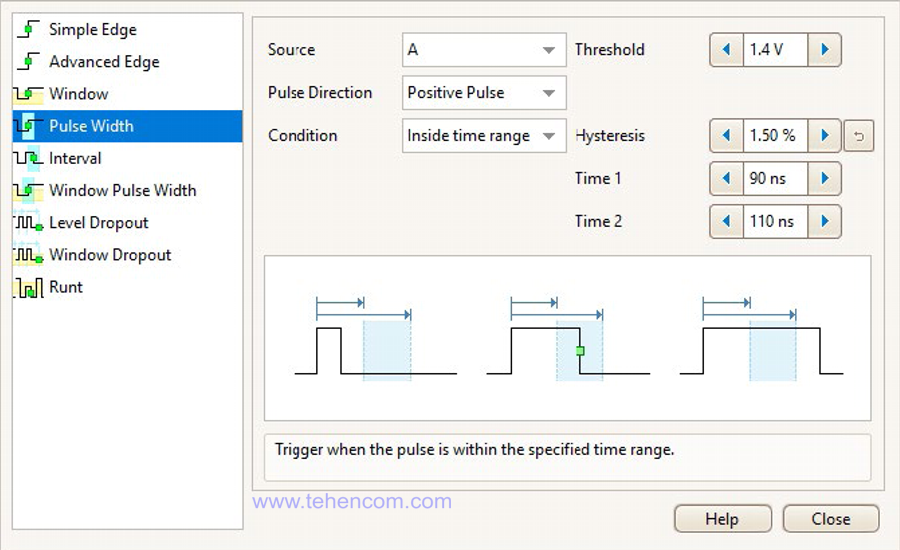
The PicoScope 2000A and 2000B series have four models (MSO modifications) with sixteen additional digital inputs. For these models, the triggering system allows you to flexibly configure the response when a variety of conditions and combinations of logical levels occur.
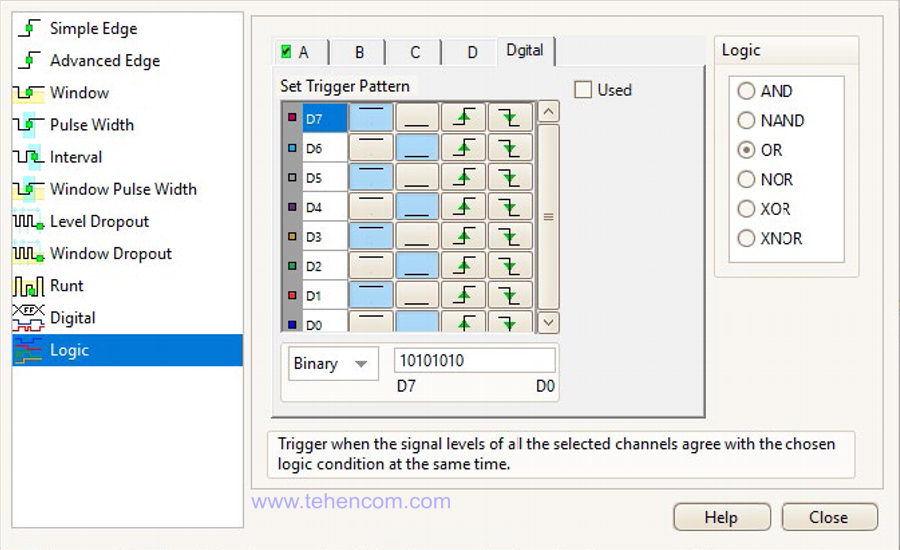
Design features
Both the PicoScope 2000A and PicoScope 2000B series include 2 and 4 channel oscilloscopes. Models with the MSO index process mixed signals from 2 analog and 16 digital inputs and are equipped with a logic analyzer. All models are equipped with a spectrum analyzer, function generator, arbitrary waveform generator and serial bus analyzer. The appearance of different models of oscilloscopes of these series is shown in the photo below.
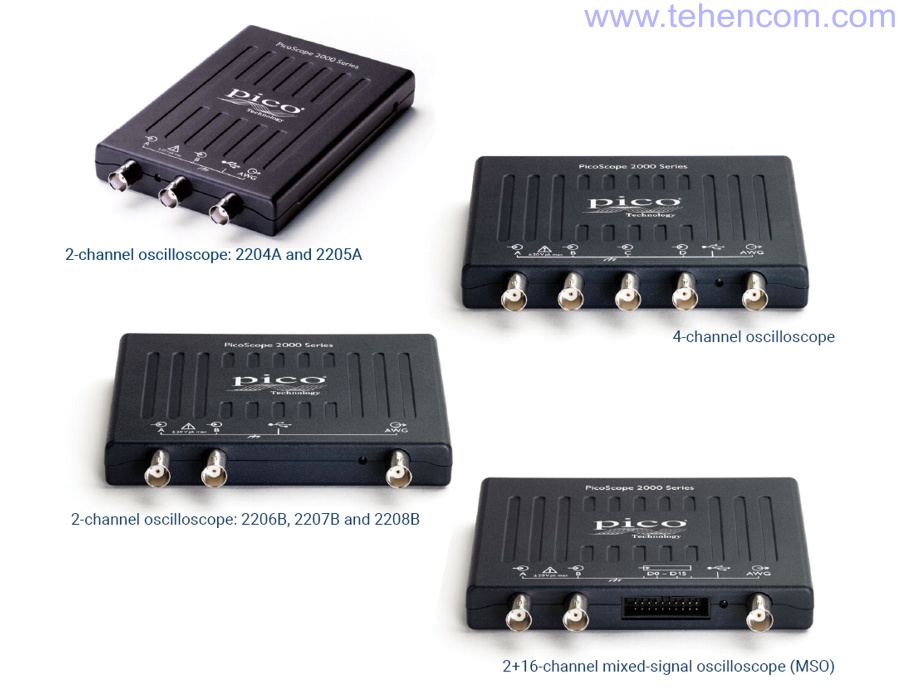
Specifications
Here is a list of the main features of the PicoScope 2000A and PicoScope 2000B series USB oscilloscopes. For detailed technical specifications, see below on this page in the section Documentation.
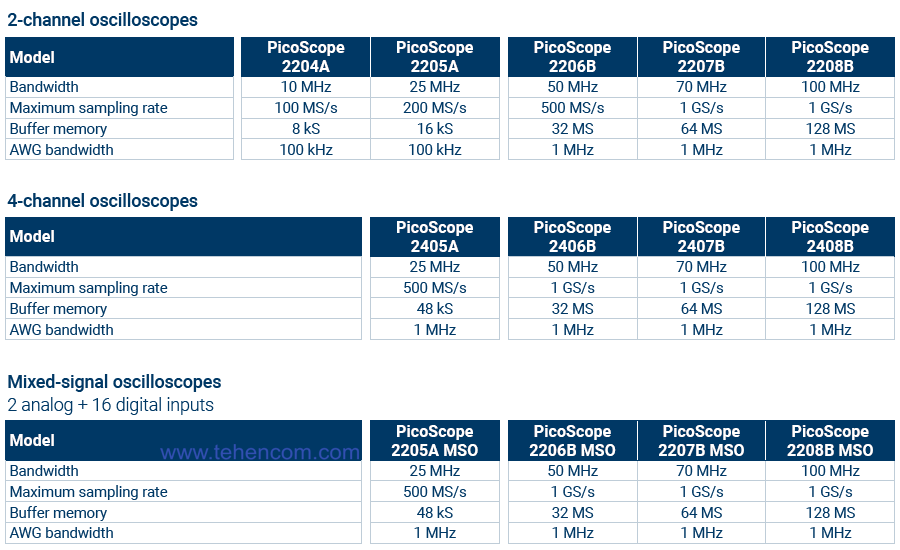
Package contents of PicoScope 2000AB
| Name | Short description |
| Pico Technology PicoScope 2204A |
Digital storage oscilloscope, bandwidth 10 MHz, 2 channels, ADC 8 bits, sampling rate up to 100 Msa/s, total recording length 8k points. Includes 2 passive probes (100 MHz, 1:1 and 10:1). |
| or | |
| Pico Technology PicoScope 2205A |
Digital storage oscilloscope, bandwidth 25 MHz, 2 channels, ADC 8 bits, sampling rate up to 200 MS/s, total recording length 16k points. Includes 2 passive probes (100 MHz, 1:1 and 10:1). |
| or | |
| Pico Technology PicoScope 2205A MSO |
Digital storage oscilloscope, bandwidth 25 MHz, 2 channels, ADC 8 bits, sampling rate up to 500 MS/s, 16 digital channels, total recording length 48k points. Includes 2 passive probes (100 MHz, 1:1 and 10:1) and one logic analyzer probe (16 digital channels). |
| or | |
| Pico Technology PicoScope 2405A |
Digital storage oscilloscope, bandwidth 25 MHz, 4 channels, ADC 8 bits, sampling rate up to 500 MS/s, total recording length 48 k points. Includes 4 passive probes (100 MHz, 1:1 and 10:1). |
| or | |
| Pico Technology PicoScope 2206B |
Digital storage oscilloscope, bandwidth 50 MHz, 2 channels, ADC 8 bits, sampling rate up to 500 MS/s, total record length 32 M points. Includes 2 passive probes (100 MHz, 1:1 and 10:1). |
| or | |
| Pico Technology PicoScope 2206B MSO |
Digital storage oscilloscope, bandwidth 50 MHz, 2 channels, ADC 8 bits, sampling rate up to 1 GS/s, 16 digital channels, total recording length 32M points. Includes 2 passive probes (100 MHz, 1:1 and 10:1) and one logic analyzer probe (16 digital channels). |
| or | |
| Pico Technology PicoScope 2406B |
Digital storage oscilloscope, bandwidth 50 MHz, 4 channels, ADC 8 bits, sampling rate up to 1 GS/s, total record length 32M points. Includes 4 passive probes (100 MHz, 1:1 and 10:1). |
| or | |
| Pico Technology PicoScope 2207B |
Digital storage oscilloscope, bandwidth 70 MHz, 2 channels, ADC 8 bits, sampling rate up to 1 GS/s, total record length 64M points. Includes 2 passive probes (100 MHz, 1:1 and 10:1). |
| or | |
| Pico Technology PicoScope 2207B MSO |
Digital storage oscilloscope, bandwidth 70 MHz, 2 channels, ADC 8 bits, sampling rate up to 1 GS/s, 16 digital channels, total recording length 64M points. Includes 2 passive probes (100 MHz, 1:1 and 10:1) and one logic analyzer probe (16 digital channels). |
| or | |
| Pico Technology PicoScope 2407B |
Digital storage oscilloscope, bandwidth 70 MHz, 4 channels, ADC 8 bits, sampling rate up to 1 GS/s, total record length 64M points. Includes 4 passive probes (100 MHz, 1:1 and 10:1). |
| or | |
| Pico Technology PicoScope 2208B |
Digital storage oscilloscope, bandwidth 100 MHz, 2 channels, ADC 8 bits, sampling rate up to 1 GS/s, total record length 128M points. Includes 2 passive probes (100 MHz, 1:1 and 10:1). |
| or | |
| Pico Technology PicoScope 2208B MSO |
Digital storage oscilloscope, bandwidth 100 MHz, 2 channels, ADC 8 bits, sampling rate up to 1 GS/s, 16 digital channels, total recording length 128M points. Includes 2 passive probes (100 MHz, 1:1 and 10:1) and one logic analyzer probe (16 digital channels). |
| or | |
| Pico Technology PicoScope 2408B |
Digital storage oscilloscope, bandwidth 100 MHz, 4 channels, ADC 8 bits, sampling rate up to 1 GS/s, total record length 128M points. Includes 4 passive probes (100 MHz, 1:1 and 10:1). |
| a plus: | |
| - | USB 2.0 cable |
| - | Quick start-up and safety guide |
| - | Russified PicoScope 6 software for controlling a USB oscilloscope (downloaded from the site) |
| - | 1 year warranty (can be extended to 3 and 5 years) |
The standard package of the PicoScope 2000A and 2000B 4-channel digital oscilloscopes is shown in the photo below. Dual channel models ship with two probes instead of four. MSO models are optionally equipped with a logic analyzer probe for 16 digital channels.
For a list of additional accessories that can be supplied with these oscilloscopes, see below on this page in the section Options and accessories.
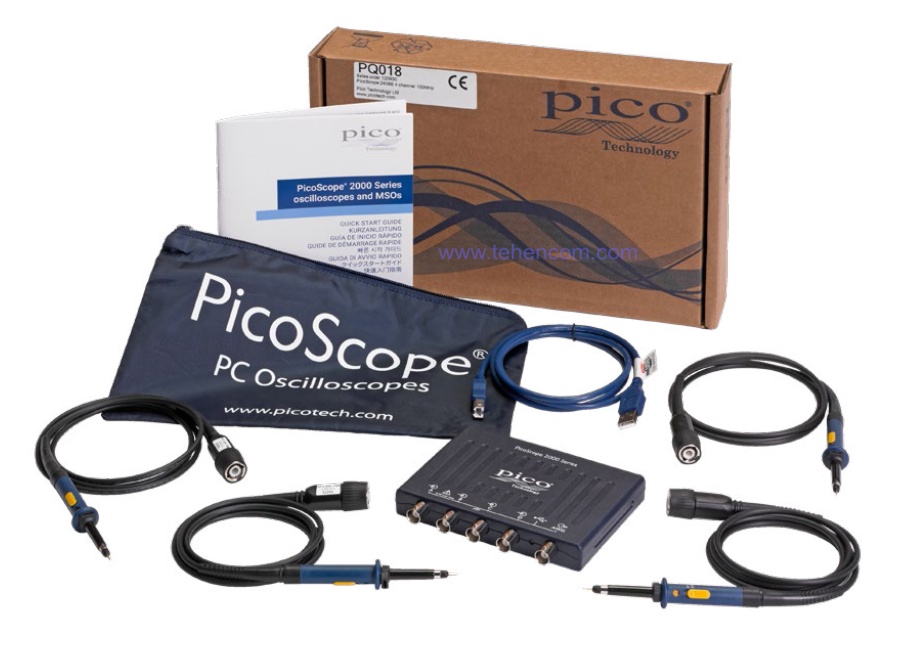
Options and accessories for PicoScope 2000AB
The following is a list of recommended accessories that can be added to the PicoScope 2000 series USB oscilloscopes to enhance their functionality. For a complete list of options and accessories with a detailed description, see below on this page in the section Documentation.
| Accessory photo | Name and short description |
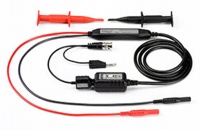
|
Pico Technology TA058 - active differential probe (50 MHz, 10:1) to measure voltages up to ±70 V (DC + peak AC) in the presence of common-mode voltage up to ±700 V (DC + peak AC) |
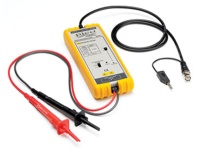
|
Pico Technology TA041 - active differential probe (25 MHz, 10:1 and 100:1) to measure voltages up to ±70 V (10:1 division) and up to ±700 V (100:1 division) in the presence of up to ±700 V (DC) common-mode voltage + peak AC) |
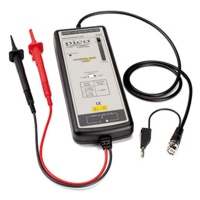
|
Pico Technology TA042 - Active differential probe (100 MHz, 100:1 and 1000:1) to measure voltages up to ±140 V (100:1 division) and up to ±1400 V (1000:1 division) in the presence of up to ±1400 V (DC) common-mode voltage + peak AC) |
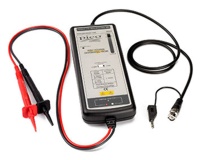
|
Pico Technology TA044 - active differential probe (70 MHz, 100:1 and 1000:1) to measure voltages up to ±700 V (100:1 division) and up to ±7000 V (1000:1 division) in the presence of up to ±7000 V (DC) common-mode voltage + peak AC) |
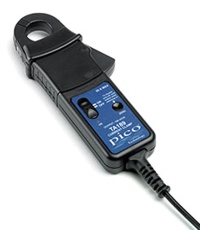
|
Pico Technology TA189 - high-precision current probe up to 30 Amp (DC + AC peak), ±1% accuracy, 100 kHz, BNC connector |
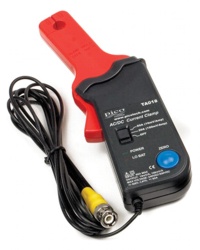
|
Pico Technology TA018 - current probe up to 60 Amp AC/DC, 20 kHz, two ranges (up to 20 A and up to 60 A), BNC connector |
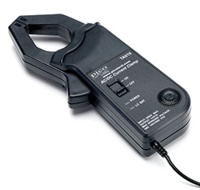
|
Pico Technology TA019 - current probe up to 600 Amp AC/DC, 400 Hz, BNC connector |
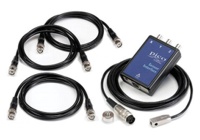
|
Pico Technology PP877 - three-axis accelerometer (X / Y / Z), ±5g, 350 Hz, three BNC connectors |
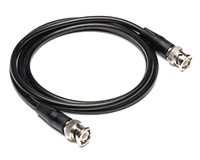
|
Pico Technology MI030 - connecting signal cable BNC(m) - BNC(m), 1.1 meters, used to connect signal sources with BNC output to the oscilloscope |
If you need technical advice on choosing the best accessory kit for the PicoScope 2000A and PicoScope 2000B USB oscilloscopes or pricing, just Contact us and we will be happy to answer your questions.
Documentation
This PDF documentation contains the most comprehensive description of USB oscilloscope capabilities. Pico Technology PicoScope 2000A and PicoScope 2000B series, their specifications and operating modes:
PicoScope 2000A and 2000B USB oscilloscope description and specifications (in English) (27 pages; 5 MB)
PicoScope 6 User Guide (in English) (239 pages; 9 MB)
PicoScope 6 User Manual (in Russian) (216 pages; 7 MB)
And here you can find our tips and other useful information on this topic:
How to quickly choose an oscilloscope – selection criteria, typical applications and popular models
DPO digital phosphor technology in oscilloscopes – principle of operation, application examples
How to buy equipment cheaper – discounts, special prices, demo and used devices
To simplify the process of choosing an oscilloscope, you can use our experience and recommendations. We have over 20 years of practical supply experience and can immediately answer many questions about models, options, delivery times, prices and discounts. This will save your time and money. For this it's simple call us or write to us at E-mail and we will be happy to answer your questions.

